Ugreen DXP4800 Plus Review: Lots of Potential for a NAS Newcomer
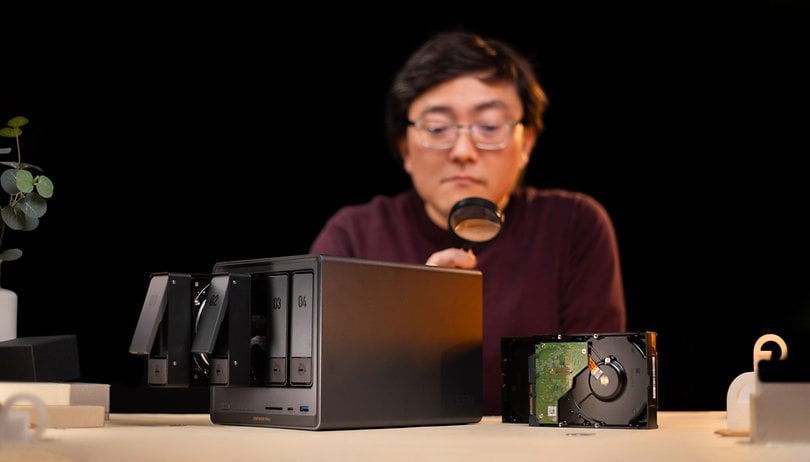

Read in other languages:
Ugreen surprised the market a while back announcing a full family of network-attached storage (NAS) devices. After some teasers, the NASync series is now available on Kickstarter. We tested the mid-range DXP4800 Plus model, and the surprises kept on coming. Find out why in nextpit's review.
Good
- Excellent packaging and build quality
- Toolless 3.5-inch drive installation
- 2.5-inch drive support on the trays
- Simple RAM and m.2 SSD (only 2280) installation
- Magnetic dust intake mesh filter
- Plenty of airflow
- Feature-packed mobile app
- Remote access support
Bad
- Limited app selection (Docker support scheduled for May)
- No VM support (but on the roadmap)
- Plastic drive trays
- Dust can still enter from the front
- Automated phone backups only for photos
- No two-factor authentication
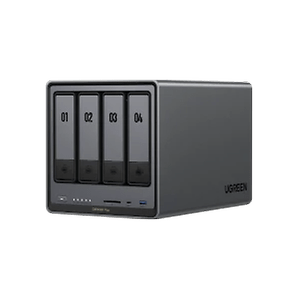
Ugreen NASync
Despite selling some SSD storage adapters, Ugreen is not really famous for its storage solutions. Most of us know the brand for its wide range of charging devices, including models that go up to 300W, and others with nifty features like the Robot charger recently tested by Antoine.
A NAS, for those not familiar with the category, is a dedicated computer specialized in locally storing files for other devices. With ever-increasing amounts of data generated with pocket computers—aka smartphones—, some people opt for cloud storage. But those who don’t want to depend on Amazon, Apple, Google, or Microsoft for their precious files, a NAS can be a good option, especially in houses with multiple devices.
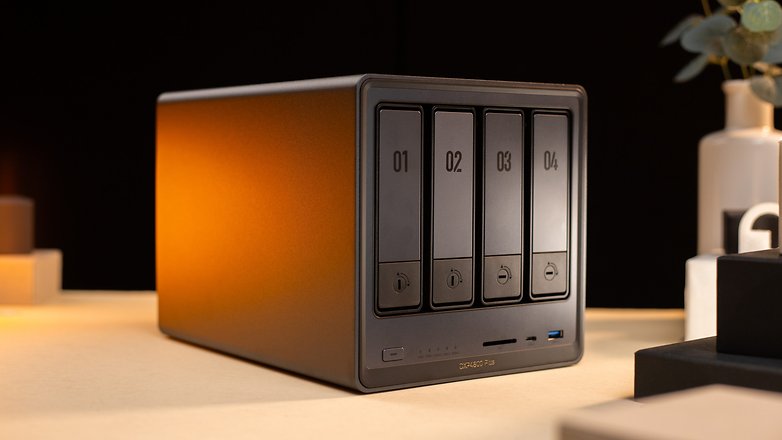
The NAS market is going through a curious revival, after losing some brands like Drobo, Thecus, Seagate, D-Link, Linksys, and even Apple (with its surprisingly capable Time Capsule) who all abandoned the segment. Recently, a couple of Chinese companies entered the market, and Ugreen is the newest one to join the party.
In a bold move, Ugreen launched six devices at the same time, with MSRPs between $400 and $1500. But instead of selling the devices directly, the company curiously chose to “crowdfund” them (even though they are pretty much developed) on Kickstarter. Part of that choice can be pointed to the fact that some features are still in development as of publishing this review, so early adopters get a 40% discount through the Kickstarter campaign.
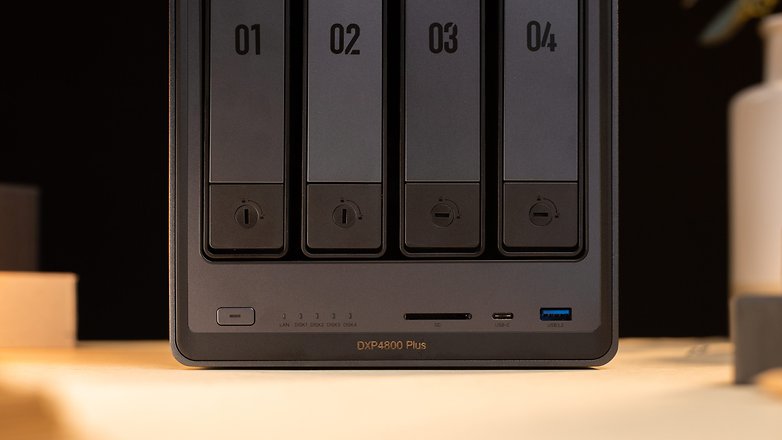
The NASync devices are positioned for domestic and SOHO (small office home office) users, with a sleek design and easy setup. Buyers need to separately buy HDDs or SSDs, but installation is simple, and the network installation can be done using a smartphone app.
This article is a collaboration between nextpit and Ugreen. The company, however, had no editorial input on nextpit's opinion.
Design and physical installation
The DXP4800 Plus unit we received for this review is the intermediate model in the six-model range. It features four 3.5-inch drive bays in the front, with one USB-A, one USB-C, and one SD card slot. All NASync models are finished in the same nice gunmetal finish as Ugreen’s chargers, which are especially pretty in a big enclosure.
Pros:
- Beautiful design and good build quality.
- Easy access to HDD, SSD, and RAM.
- Included dust filter.
- Excellent port selection.
- Easy to set up.
Cons:
- Plastic drive trays feel delicate.
In the design department, the Ugreen DXP4800 Plus is not only competitive with its NAS rivals, it manages to beat them in our opinion. The device feels well-built, with a thick metal housing and a nice finish that does not feel like a first-generation product.
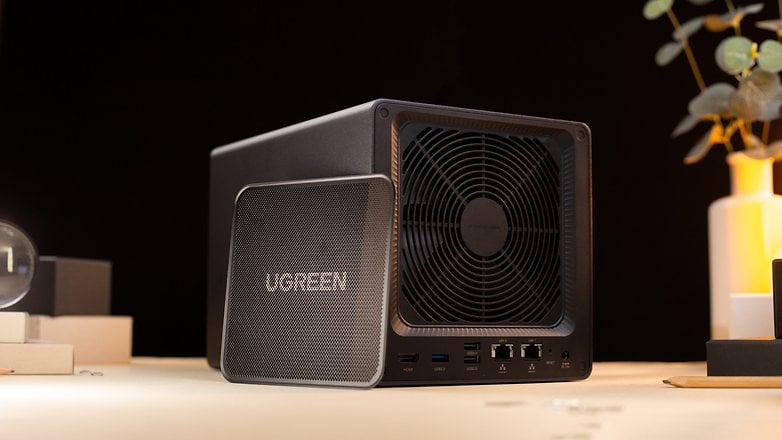
Besides the front ports, the DXP4800 Plus port selection continues on the back panel, with one HDMI, 1 USB-A 3.2, 2 USB-A 2.0, one 2.5 gbit RJ45 and one 10 Gbit RJ45 port. Next to them are the reset pinhole and a 19V DC power input. Curiously, the supplied PSU is not made by Ugreen, but by Huntkey, which is relatively well-known in the power supply market.
The back is dominated by the large intake cooling fan, which can have the bundled dust filter magnetically attached to it. Air exits through the approximately 5 mm openings between the drive bays in the front, which are large enough to let dust in when the back fan is idling.
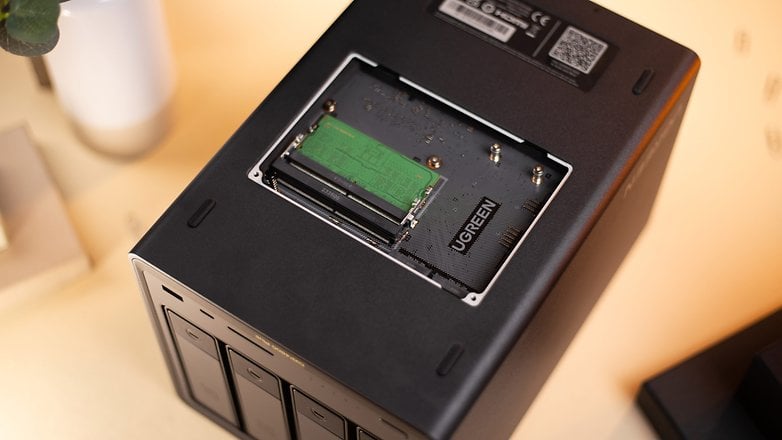
In the bottom, there is an upgrade bay with the two DDR5 SO-DIMM slots—upgradable to 64 GB, with one of the slots already populated with the default 8 GB— and two free slots for m.2 SSDs. It is worth noting that the DXP4800 Plus only comes with the mounting points for the most common 2280 m.2 sticks, so no 2230/2242/2260/22110 SSDs.
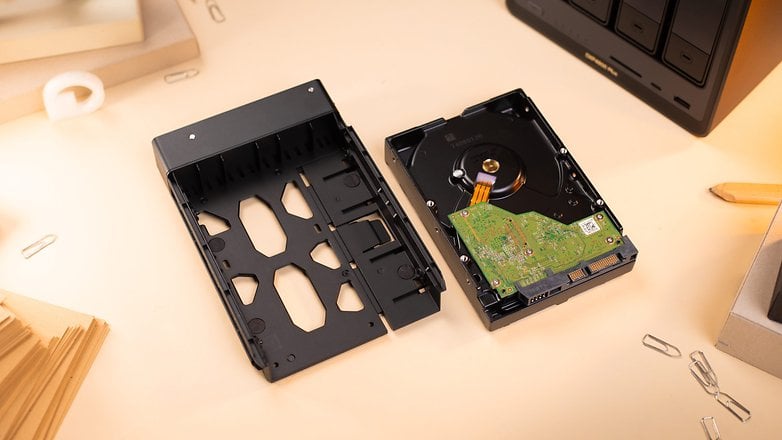
Drive installation is simple and toolless. Simply press the bottom part of the bay to open the pull tab. The drive bays are all plastic and also don’t require tools to open and lock standard 3.5-inch HDDs. Push a tab in the bottom to slide open the tray, position the drives according to the mounting holes, then close the tray, and slide it back in the enclosure.

The plastic construction makes the trays easy to use, but there is a considerable amount of flex, and they don’t feel as solid as the DXP4800 Plus enclosure. Thankfully, it is something most buyers will need to deal with only once every couple of years. As a bonus, the hard drive bays can also accommodate 2.5-inch HDDs/SSDs using the included drive screws in the box.
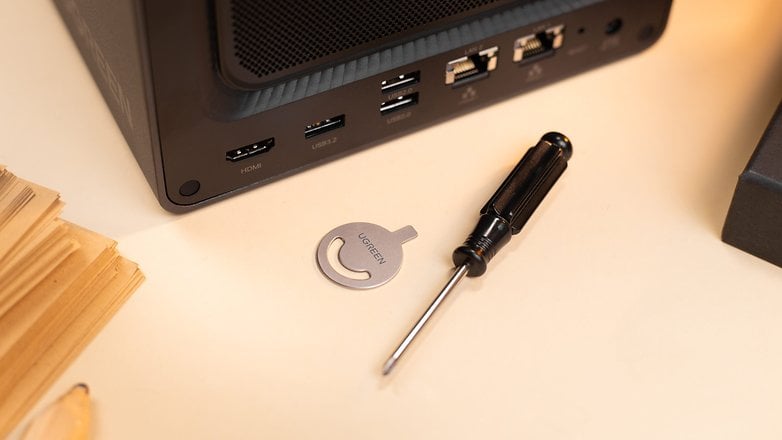
Speaking of packaging, Ugreen included not only screws for 2.5-inch drives but also the necessary screwdriver which can also be used to open the bottom bay and secure the m.2 SSDs. There is also the 150W PSU, Ethernet cable, and thick thermal pads for the m.2 drives.
Software
As a newcomer to the NAS space, Ugreen managed to surprise us with what is probably the most complete mobile app in the category. Not only that, old-timers (such as yours truly) can also use a desktop app or the more traditional way of setting things up on a web browser.
Pros
- Complete all-in-one mobile app.
- All the standard NAS features.
- Remote access option.
- Interesting features in the photo backup service.
Cons
- Limited app selection (Docker and VM support still in the works).
- Phone backup limited to images.
- No two-factor access authentication.
We chose to do the initial setup on a phone in order to test the app’s capabilities and we were impressed. Select the region and language, plug the NAS to a network switch, access point, or router, set up the administrator account and the app will automatically detect the device. You can optionally set an online account for remote access before reaching the home screen.
After the initial setup, you will probably notified of an available update, after a couple of minutes and a reboot, you can start setting up the available storage.
The DXP4800 Plus offers the standard RAID 1 (data is mirrored in all drives for redundancy), RAID 0 (data is split between drives for speed), RAID 10 (with four drives, data is split into two pairs of mirrored drives) JBOD (just a bunch of drives), or RAID 5 or 6, with parity protection that can survive losing one or two drives, respectively.
Volumes can be formatted in either Btrfs or ext4, and installed SSDs can be set as a cache for speeding up reads and writes. We used RAID 0 in the setup in order to test speeds, but recommend using a proper RAID level. The storage manager in the mobile or web app also allows setting up removable devices, both USB flashdrives, removable HDDs, and SD cards.
After that, you can create the base folders, and then users and users groups. Access to the base folders can be granted to specific users or groups, even on the mobile app.
Back to the app’s home screen, users have access to the most used tools and resource monitoring. Live status are available for CPU, GPU, RAM, network usage, drives, and pools reads/writes, including fan speed and temperatures.
The NASync app can currently setup the commonly used SMB file sharing system (compatible with Windows, macOS, Linux, and other systems), FTP, and even WebDAV. NFS and rsync access, however, can only be set on the web interface, at least for now.
Despite being slightly more complete, the web interface feels less polished than the phone app. That is partly due to mixing serif and sans-serif fonts through the pages. Ugreen’s UGOS Pro follows the same desktop metaphor as other NAS systems, with preset icons, a start menu, status bar, and shortcuts to settings, user management, notifications, and an app store.
The app selection is currently limited to a bunch of first-party apps. The DXP4800 Plus true potential will only be enabled with Docker support, currently scheduled for May/2024, and virtual machines (VM, with planned support, but no availability estimate).
Docker support will open the possibility of hosting local servers such as Plex or Jellyfin for TV shows and movies, Home Assistant, advanced management for media (and Linux ISOs), game servers, VPN access, web hosting, and many (MANY) others.
Even the advertised media playback over the HDMI port mentioned in the webpage could not be used in our updated unit. Other reviewers managed to get the feature working, but the media database was only available in Chinese.
Oh, and another frequently asked question before the official launch was support for third-party operating systems such as TrueNAS, Unraid, OpenMediaVault, Proxmox and others. It is technically possible to replace the boot SSD, but the procedure is not officially supported and outside of the scope of this review.
Included apps
Besides the basic NAS features, the DXP4800 Plus offers remote access support through UGREENlink. The feature sets a permanent online address that can be accessed on any browser to reach your local files, do remote backups, and more. Personally, however, I cannot recommend opening a NAS for online access considering recent ransomware exploits in models from Qnap, Asustor, Terramaster, and other brands.
One of the current highlights in the Ugreen NASync ecosystem is probably the photo manager, which can be paired with the mobile app photo backups for a powerful Google Photos-like experience. The service offers advanced features such as object recognition, face matching, geolocation metadata, and other features to quickly find your pictures.

Searching for objects resulted in mixed results, but the system also used optical character recognition (OCR) to find text in images. It cannot compete with Google Photos (yet?) but already shows some promise. And is considerably easier to use than other self-hosting alternatives such as Photo Prism or Immich.
Other apps for the UGOS Pro system include a downloader (compatible with HTTP links and torrent seeds to complete your Linux ISO collection), and a versatile file manager. The latter includes a decent media player that can playback media not only on the web interface but also on the standard mobile app.
Ugreen DXP4800 Plus performance
Powered by a 12th-generation Intel chip, the Ugreen DXP4800 Plus NAS feels overkill for its current feature set. The true potential of the processor will only be achieved with the promised Docker support—and VM for the more expensive models with the Core i5 chip. Network transfer speeds are good, but you will need to invest in your network to avoid bottlenecking the device.
Pros:
- File transfers above 4 Gbps.
- Easy cache and RAM upgrades.
- Plenty of horsepower for future Docker support…
Cons:
- …Lots of untapped horsepower without Docker support.
Since this is our first NAS review, we could not test 10 Gigabit Ethernet (10Gbe) file transfers. However, equipped with four 4TB WD Red Plus drives in RAID0, reads and writes pretty much reached the 2.5 Gbps (292 MB/s) available in our desktop PCs at the office. Transferring files to two computers simultaneously reached around 320 MB/s, and that’s without using SSDs as cache.
Using two Samsung 980 Pro SSDs as a RAID0 cache for read and writes allowed transferring files to two 2.5 Gbps desktop PCs at nearly 4.5 Gbps (560 MB/s), which is far from 10 Gbps, but near the limits of what our local PCs could handle plugged to an Eero Max 7 router. Curiously, the number is pretty close to what our colleagues at NASCompares found in their review using an end-to-end 10Gbe setup.

As for the Pentium 8505 processor, its four efficiency cores and one performance core from Intel’s 12th generation family (Alder Lake) couldn’t really be used to their full potential. While the object and face recognition features on the photo management system briefly taxed the CPU cores, the truth is that only full Docker and/or VM support can really take advantage of its performance potential, and the same can be said for the good enough default 8 GB of DDR5 RAM.
Regarding power consumption, we observed a peak consumption for our setup (four WD Red Plus 4 TB HDDs) of 74 W during startup, around 60 W during file transfers, and an idle consumption of around 41 W. Other reviewers apparently observed higher power usage, so your mileage may vary (or wattage), depending on the drives installed.
Ugreen DXP4800 Plus technical specifications
| Ugreen DXP4800 Plus | |
|---|---|
| Operating System | UGOS Pro Tested version: 1.0.0.0483 |
| Processor | Intel Pentium Gold 8505 1 performance core (with multi-threading) 4 efficiency cores |
| Memory | 8 GB DDR5 RAM Samsung M425R1GB4BB0 SO-DIMM Expandable up to 64 GB |
| OS storage | 128 GB SSD |
| SATA drive bays | 4 Toolless installation for 3.5-inch drives Included screws for 2.5-inch drives 22 TB drive support |
| M.2 SSD slots | 2 2280 M.2 support 4 TB drive support |
| Network interfaces | 1x RJ45 10 GbE 1x RJ45 2.5 GbE |
| Front ports | SD card 3.0 1x USB-C (10 Gbps) 1x USB-A (10 Gbps) |
| Back ports | 1x HDMI 1x USB-A (5 Gbps) 2x USB-A (480 Mbps) |
| Power | Huntkey 19V 150W AC PSU UPS support in UGOS Pro |
| App support | Android, iOS, Windows, macOS, web |
Final verdict
The Ugreen DXP4800 Plus is a surprisingly interesting new entry to the tough NAS market. The Chinese company seems to have done its homework in terms of hardware and software, with a mobile app that soundly beats the collection of specialized apps other brands require users to install.
However, there is still a lot of untapped potential when it comes to features and services. With the basic NAS features covered, Ugreen really needs to also nail its implementation of docker containers—and eventually, virtual machines—to be considered a true rival to the likes of Synology, Qnap, Asustor, and others. Until then, a big portion of the hardware feels underutilized, which can be particularly true for the more expensive models.
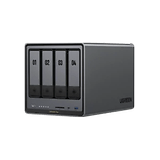
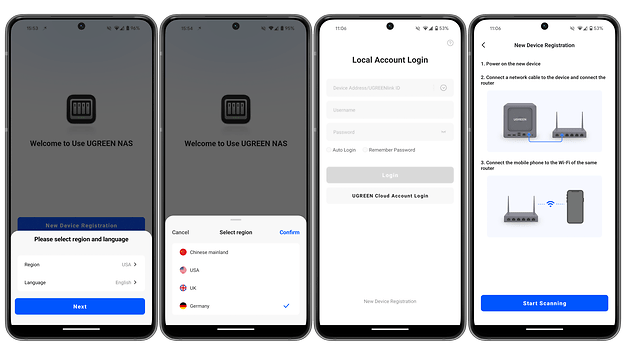
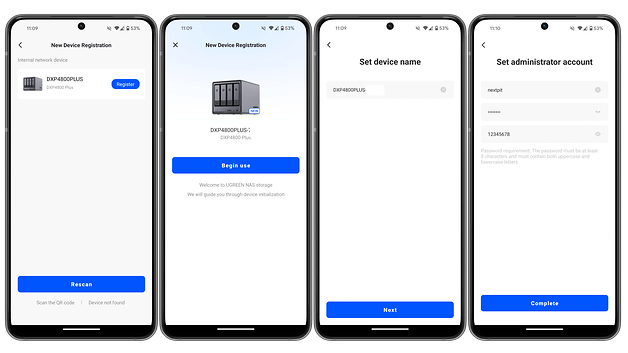
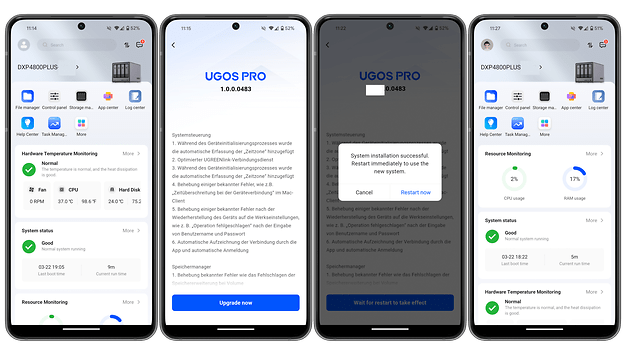

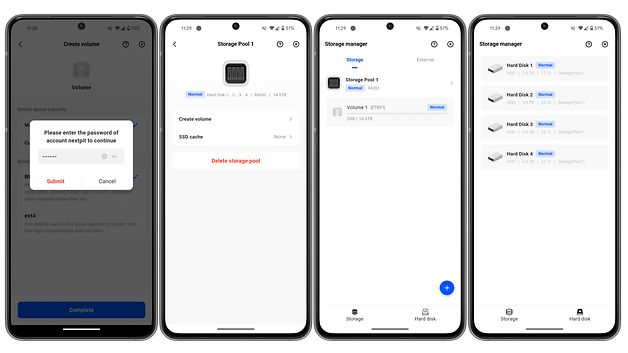
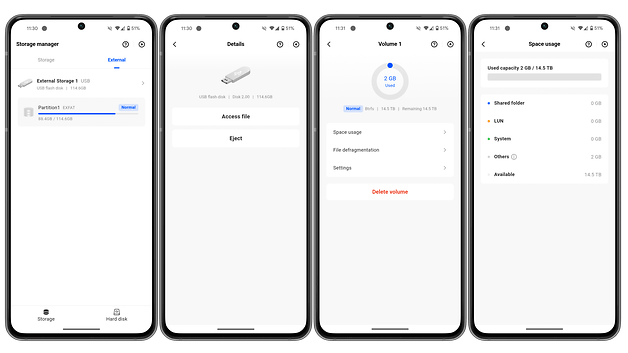
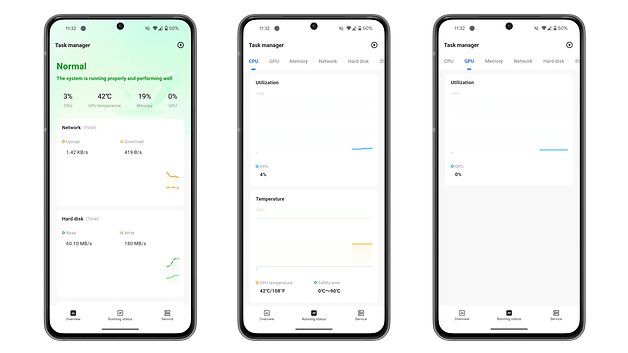
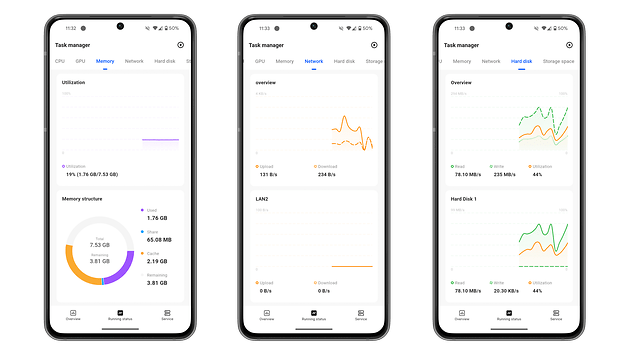
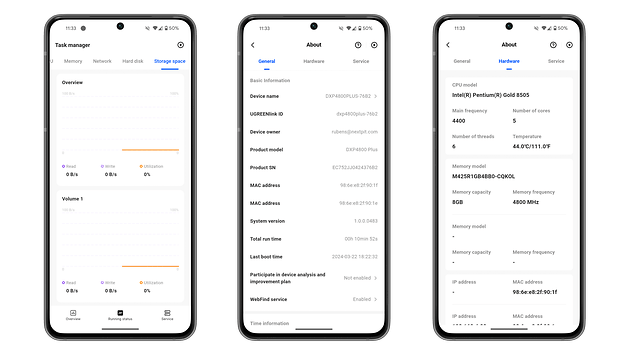

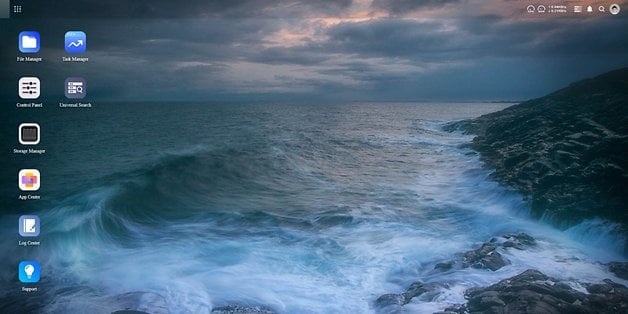


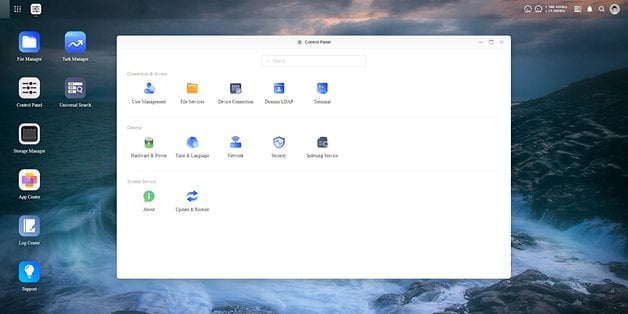
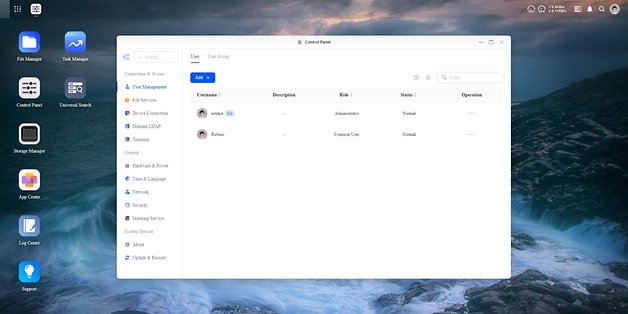
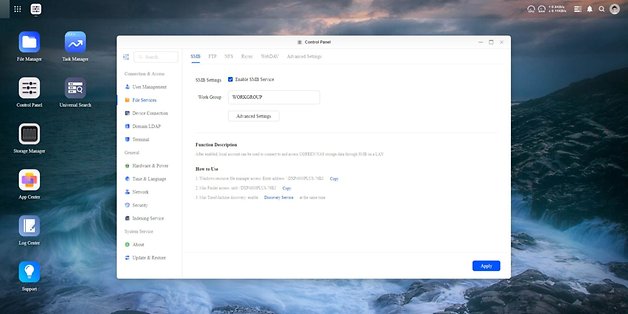
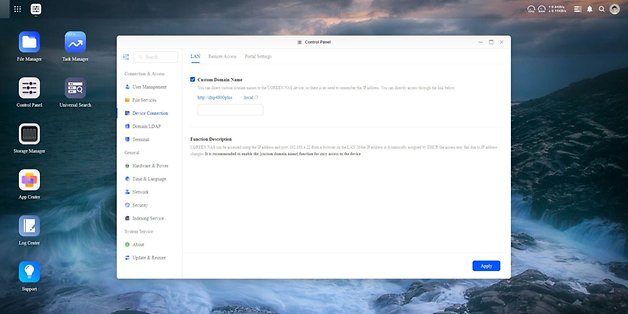
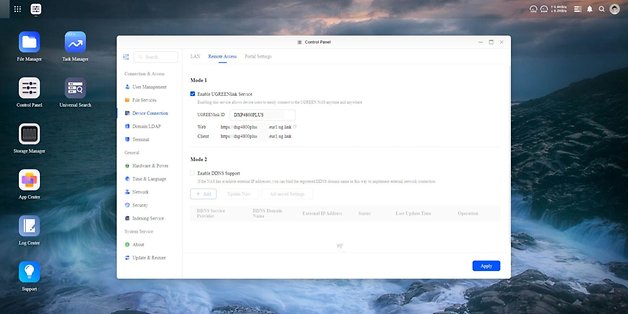
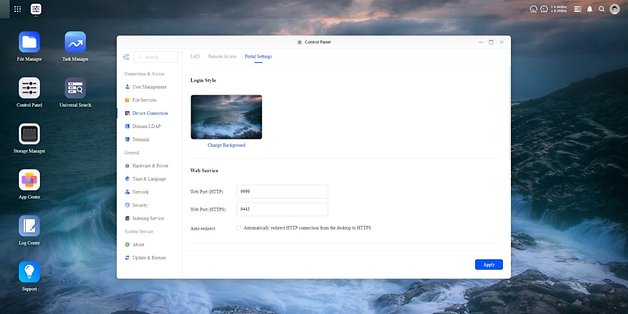

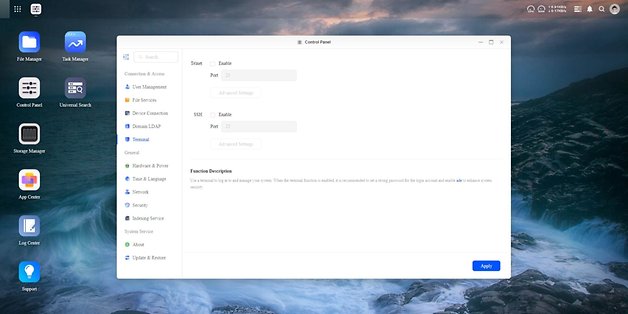


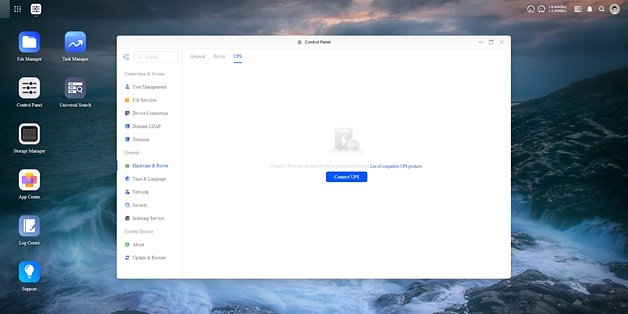
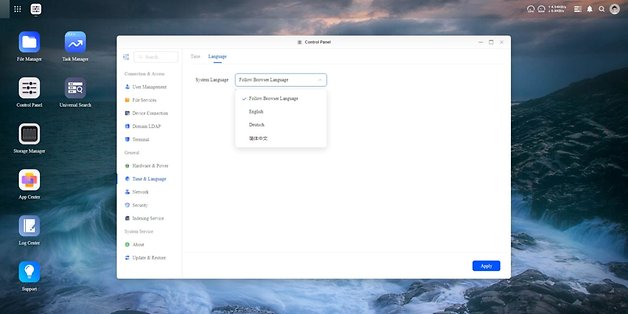
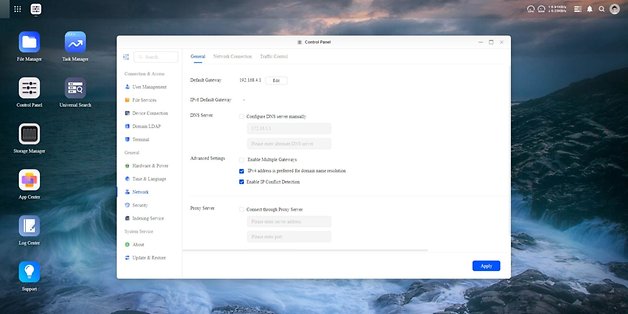

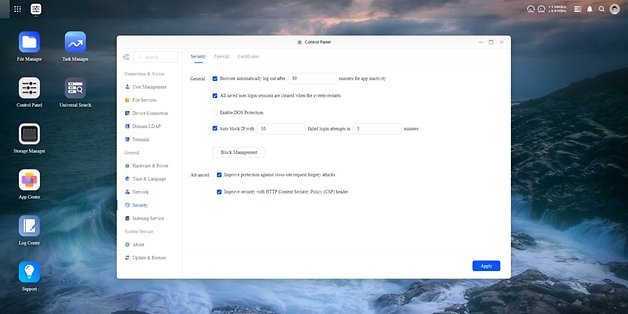
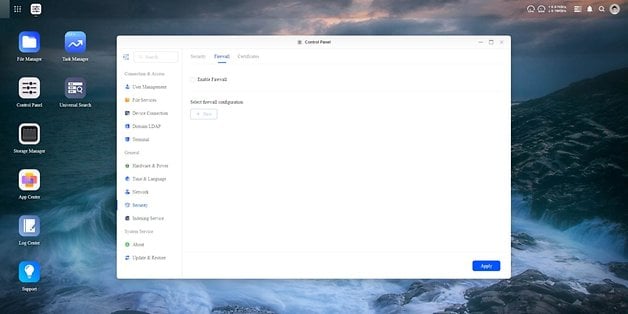
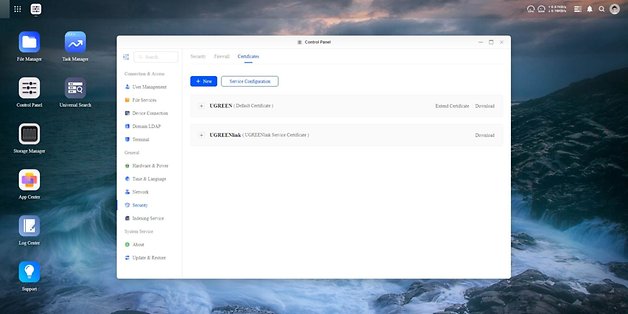
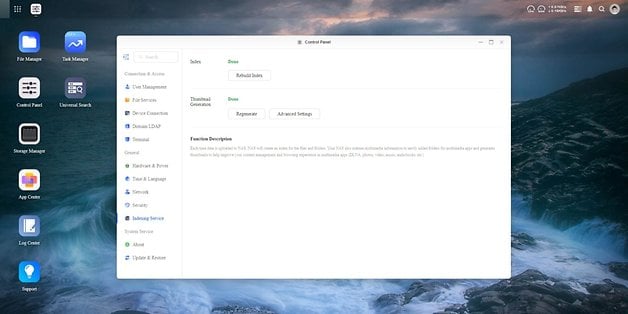

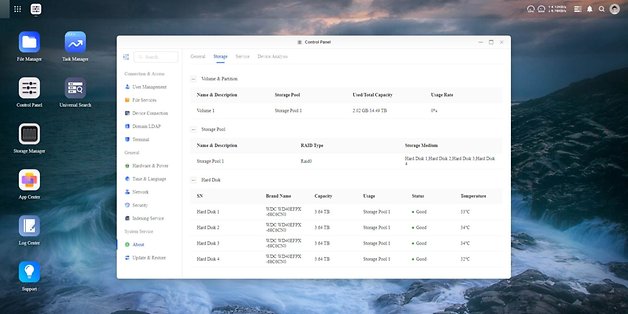


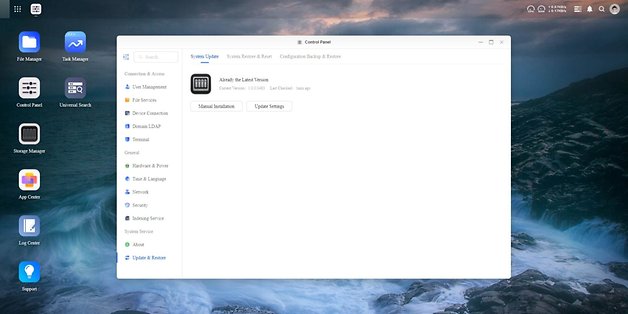
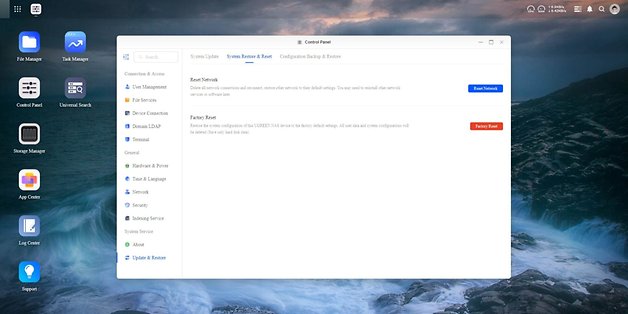

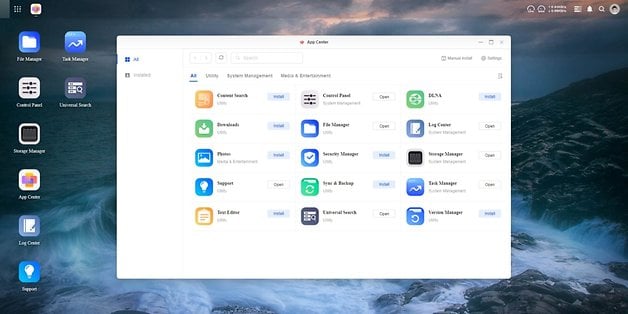

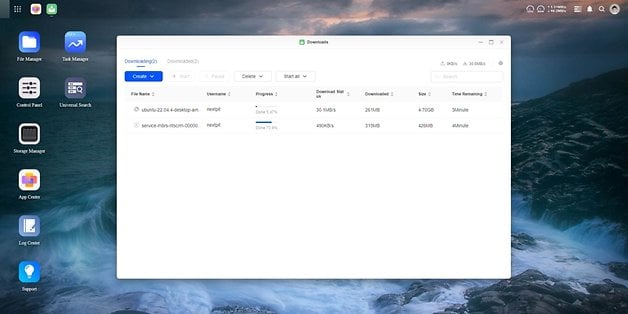

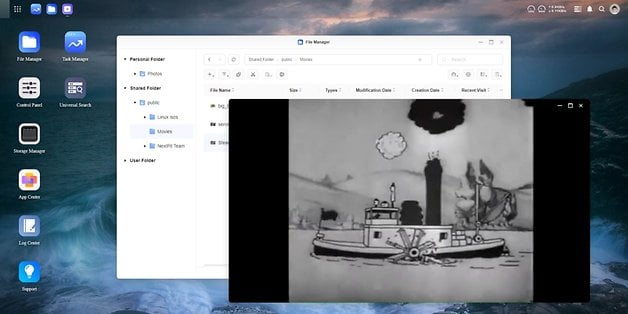
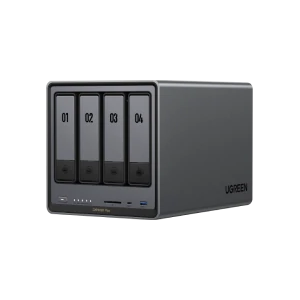
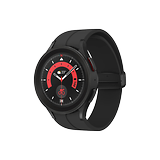
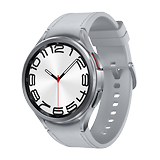

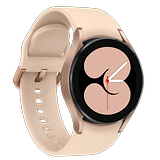







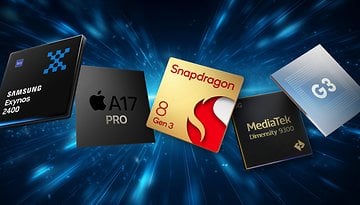
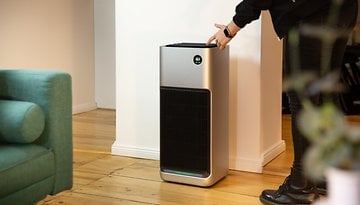

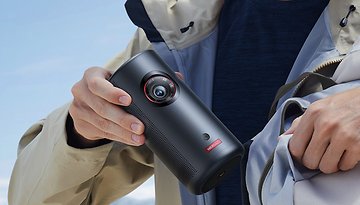


Recommended editorial content
With your consent, external content is loaded here.
By clicking on the button above, you agree that external content may be displayed to you. Personal data may be transmitted to third-party providers in the process. You can find more information about this in our Privacy Policy.